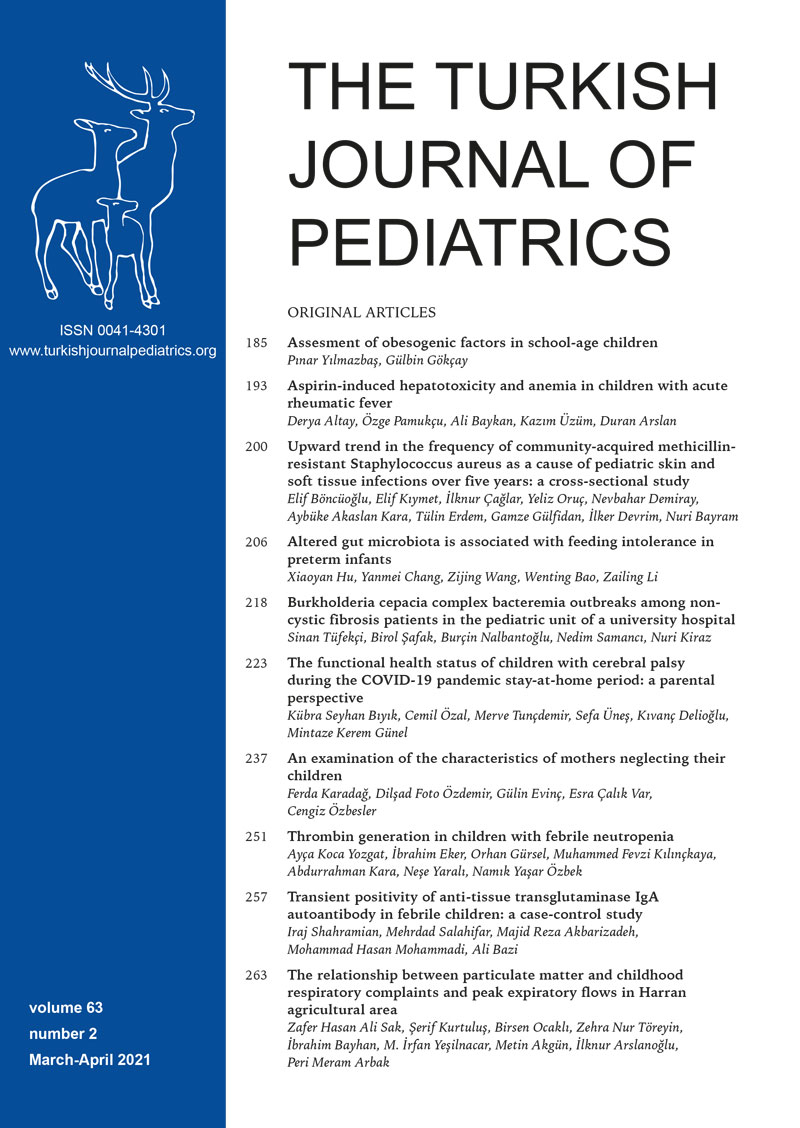Abstract
Background. Measurement of the optic nerve sheath diameter (ONSD) with point-of-care ultrasound (POCUS) is a non-invasive and radiation-free technique that can be used to assess increased intracranial pressure (ICP). Ophthalmic artery and central retinal artery Doppler indices can be used like transcranial Doppler to evaluate increased ICP. This study aims to examine the diagnostic value of ONSD measurements and central retinal artery Doppler indices in the evaluation of pediatric patients with increased ICP.
Methods. This was a prospective, case-controlled single center study. The study group was comprised of a total of 38 pediatric patients with increased ICP and the control group included 19 healthy children. Ophthalmic ultrasound was performed and ONSD and central retinal artery Doppler indices were measured.
Results. The mean age of the study group was 80.84 ± 65.12 months. The mean ONSD was 5.9 ± 0.8 (3.6-8.1) mm in the study group and the mean resistive index (RI) was 0.71 ± 0.08 (min:0,55-max:1) and was significantly greater than the control group (p < 0.001 and p < 0.001, respectively). In terms of predicting increased ICP, the ONSD measurement was the strongest parameter, with its area under the curve: 0.767 (95 percent confidence interval: 0.68-0.85). In the study group, the cut-off value for ONSD was 5.8 mm (66 percent sensitivity, 100 percent specificity) and the cut-off value for RI was 0.68 (63 percent sensitivity, 83 percent specificity).
Conclusions. Point-of-care ultrasound is a noninvasive and important tool in pediatric intensive care units. Our study is significant as one of the few pediatric studies where central retinal artery Doppler indices are evaluated in addition to OSND, in patients with increased ICP.
Keywords: Doppler indices, central retinal artery, optic nerve sheath diameter, pediatric, point-of-care ultrasound, resistive index
Copyright and license
Copyright © 2021 The Author(s). This is an open access article distributed under the Creative Commons Attribution License (CC BY), which permits unrestricted use, distribution, and reproduction in any medium or format, provided the original work is properly cited.














